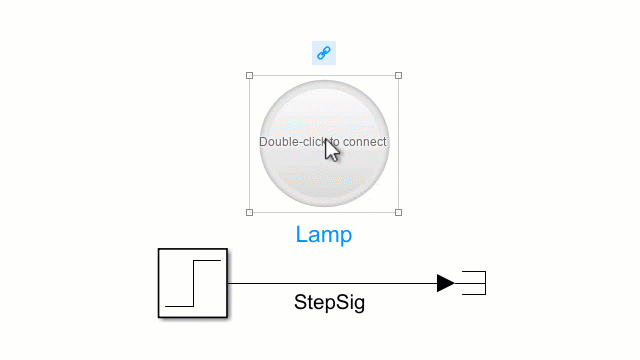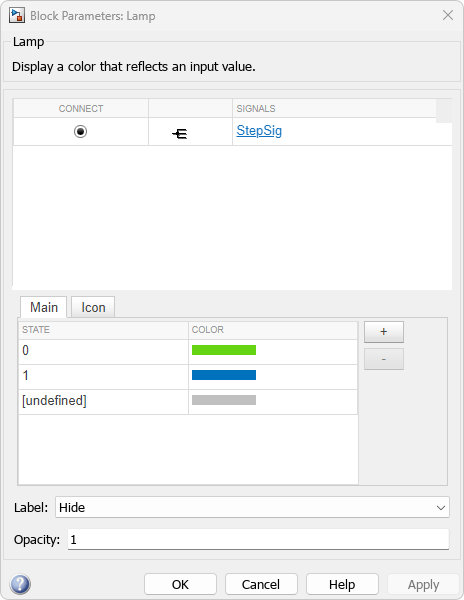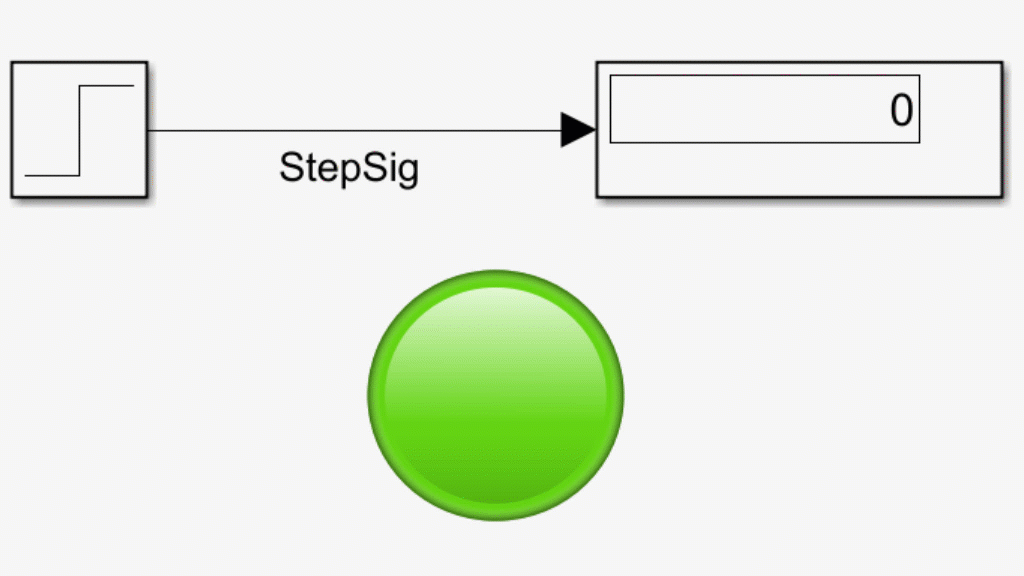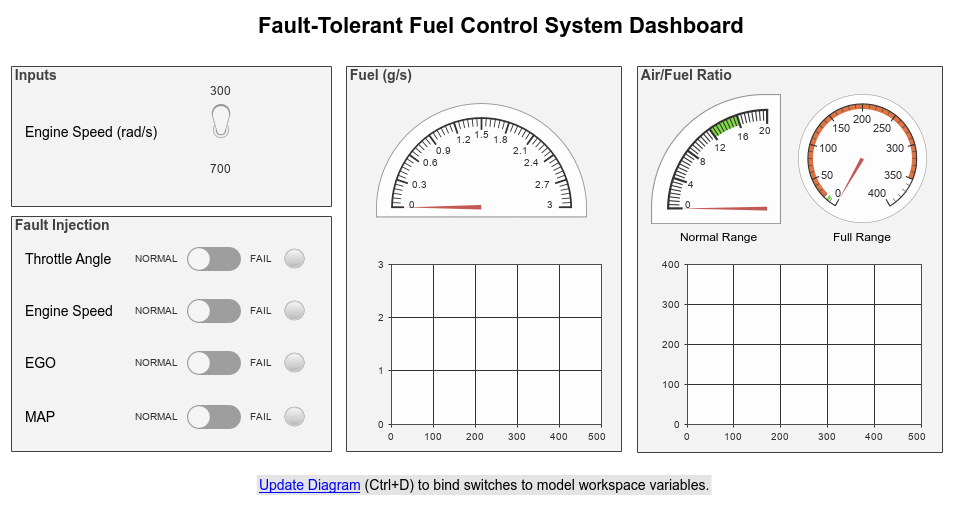Lamp
显示反映信号灯上信号值的颜色
库:
Simulink /
Dashboard
描述
Lamp 模块会显示一种颜色,用来指示其所连接的信号的值。要配置 Lamp 模块以提供仿真期间所需的信息,请指定一个或多个状态,这些状态将信号值与要显示的 Lamp 模块的颜色配对。您可以将 Lamp 模块与其他 Dashboard 模块结合使用,为您的模型构建包含各种控件和指示器的交互式仪表板。
信号灯图标
您可以通过选择一个内置图标或上传您自己的自定义图标来更改 Lamp 模块的外观。内置图标包括基本形状、汽车指示灯和无线图标。您可以使用图标参数或使用工具条中的模块选项卡来更改 Lamp 模块的图标。Dashboard 库还包含为每个图标提供预配置的 Lamp 模块版本的库。有关完整的详细信息,请参阅图标。
![]()
如果您要自定义 Lamp 模块的外观(该外观无法通过选择图标来实现),请考虑使用 Customizable Blocks 库中的 Lamp 模块来设计您自己的指示灯。
连接 Dashboard 模块
Dashboard 模块不使用端口来连接到模型元素。要连接 Dashboard 模块,请使用连接模式。要在未连接的模块上进入连接模式,请将鼠标在要连接的模块上暂停并点击连接按钮  。要在已连接的模块上进入连接模式,请选择该模块,在显示的省略号 (…) 上暂停,然后在展开的操作菜单中点击连接按钮。
。要在已连接的模块上进入连接模式,请选择该模块,在显示的省略号 (…) 上暂停,然后在展开的操作菜单中点击连接按钮。
要将显示模块连接到模型中的信号或更改显示模块的连接,请进入连接模式。选择要连接的信号线。从出现的列表中,选择您要连接的信号。然后,请在 Dashboard 模块上悬停并点击完成连接按钮  。要查看 Dashboard 模块显示连接模块的值,请运行仿真。
。要查看 Dashboard 模块显示连接模块的值,请运行仿真。
有关连接 Dashboard 模块的详细信息,请参阅Connect Dashboard Blocks to Simulink Model。
您还可以将 Dashboard 模块连接到 Stateflow® 图。有关详细信息,请参阅Connect Dashboard Blocks to Stateflow (Stateflow)。
此动画说明如何将 Lamp 模块连接到您的模型。

示例
扩展示例
限制
除了 Dashboard Scope 模块和 Display 模块之外,Dashboard 模块只能连接到实数标量信号。
您不能在“模块参数”对话框中使用连接表将 Dashboard 模块连接到已注释掉的模块。使用连接模式将 Dashboard 模块连接到带注释的模块时,Dashboard 模块在您取消注释模块之前不会显示连接的值。
Dashboard 模块无法连接到引用模型中的模型元素。
在仿真模型层次结构时,引用模型内的 Dashboard 模块不会更新。
Dashboard 模块不支持快速加速仿真。
在仿真期间,您无法将 Dashboard 模块连接到 Stateflow 图数据或状态活动。
您无法以编程方式将 Dashboard 模块连接到 Stateflow 图数据或状态活动。
由于加速模式仿真的模块简化或优化,一些信号在仿真期间没有可用的数据。要使用 Dashboard 模块查看此类信号,请标记信号以进行记录。
参数
模块特性
数据类型 |
|
直接馈通 |
|
多维信号 |
|
可变大小信号 |
|
过零检测 |
|
扩展功能
版本历史记录
在 R2015a 中推出



































































